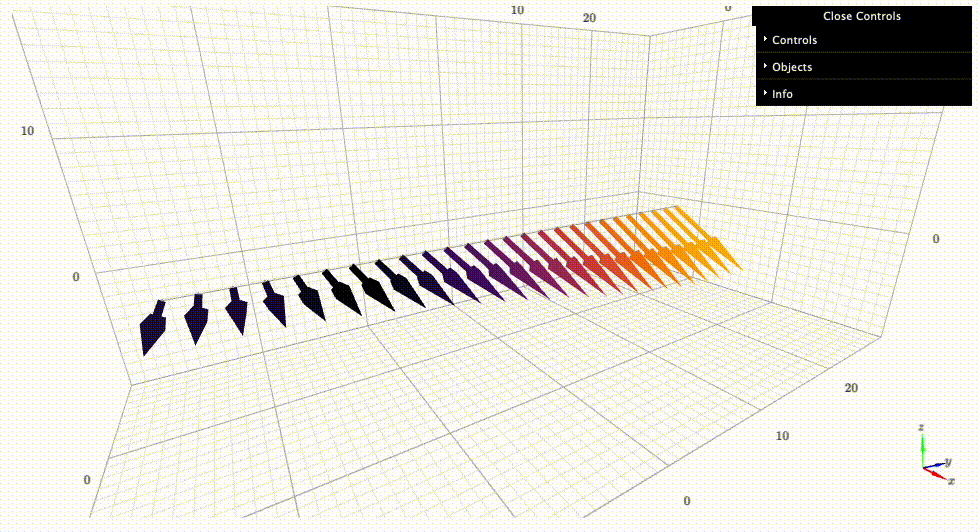Mode movie#
with this notebook we demonstrate how to visualize and animate the modes for a given wave vector
as an example a permallow film of 50 nm in thickness is taken
the dispersion is computed for the Damon-Eshbach geometry, wave vector perpendicular to the ground magnetic state stabilized by an external static magnetic field of 20 mT
[1]:
import tetrax as tx
import numpy as np
%matplotlib notebook
import matplotlib.pyplot as plt
Let’s create a permalloy thick film of 50 nm, compute the dispersion and show the modes at k=0 (or any k) as a movie.
[2]:
sample = tx.create_sample(name="Monolayer_mode_movie",geometry="layer")
mesh = tx.geometries.monolayer_line_trace(50,lc=2)
sample.set_geom(mesh)
Setting geometry and calculating discretized differential operators on mesh.
Done.
Creating the experimental setup, applying a static external field of 20 mT.
[3]:
exp = tx.create_experimental_setup(sample)
sample.mag = [1,0,0]
exp.Bext = [20e-3,0,0]
dispersion = exp.eigenmodes(kmin=0,kmax=40e6,num_modes=5,num_cpus=-1,save_modes=True)
100%|██████████| 81/81 [00:09<00:00, 8.18it/s]
Plotting the dispersion
[4]:
k_ = dispersion["k (rad/m)"]
plt.rcParams["figure.figsize"] = (8,6.5)
plt.figure()
for i in range(2):
plt.plot(k_*1e-6,dispersion[f"f{i} (GHz)"],ls="",marker="o", label=f"mode N={i}")
plt.xlabel('wave vector (rad/µm)')
plt.ylabel("frequency (GHz)")
plt.legend()
plt.show()
Show mode movies#
any experiment created by the experimental setup has the show_mode() method, that will visualize the mode colored by the dynamical component, if requested also in an animated form
the options are:
wave vector, k=…, should be supplied in [rad/µm]
mode number, N=…
scaling the magnetization, scale=…,
on the equilibrium or without, on_equilibrium=True or False
animated = True or False
the requested periods, periods=…
frames_per_period=…
frames per seconds, fps=…
scaling the dynamical components, scale_mode=…
Here is an example for a Daemon-Eshbach surface mode, namely the mode with N=1 for k=10 (rad/µm), choosing 10 periods, 30 frames per seconds, etc…
The mode movie will show that the N=1 mode is localized mostly to one of the surfaces
[5]:
exp.show_mode(k=10,N=1,periods=10,animated=True,scale=10,fps=30,scale_mode=2)
